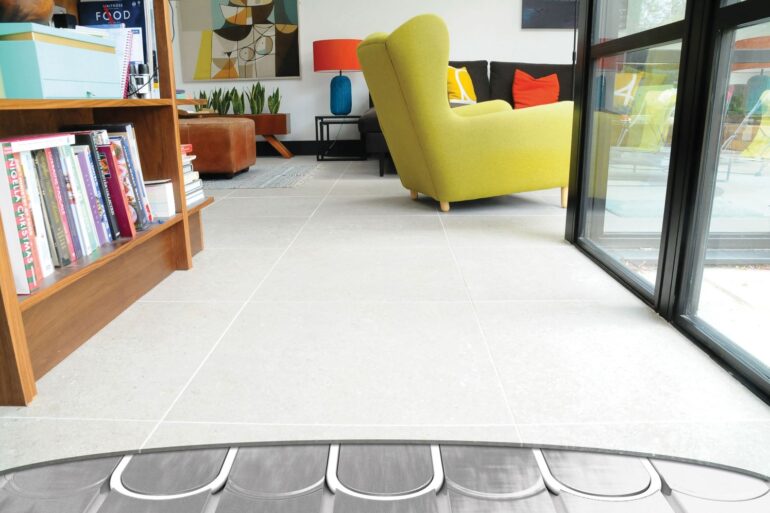Rightmove recently revealed that underfloor heating is one of the top five most requested features for new homes. But what if you didn’t have to move to get the heating system of your dreams?
Underfloor heating is becoming more desirable and affordable than ever before but there are still so many misconceptions running rampant that put people off. Wunda Group, a British heating company with more than 18 years of experience, debunks the myths rife when it comes to underfloor heating.
Sam Jump, head of business development, and Tom Edmunds, general manager for Wunda Group share their mythbusting truths about underfloor heating.
1. It’s disruptive
Sam shares how Wunda’s Rapid Response® system combats this issue: “We have reinvented underfloor heating and our quick to install Rapid Response system can actually be laid directly on top of your existing flooring rather than digging up your floors, which is required for screed systems that need to be buried beneath six inches of screed and cement.”
Tom even fitted his own system over a long weekend: “Essentially, you just clear the room, stick our boards to the existing floor, run the pipe back and forth and put a new floor on top. If you can lay laminate flooring, you can lay our heating system. You then need a professional to come in and connect the pipework to your existing heating supply, be that a boiler, heat pump or solar system. But that won’t be a big job – it can be done in a day.”
“If you’re confident putting up flatpack furniture, it’s just as easy – if not easier,” explains Sam. “You’re just cutting high-density polystyrene panels to sizes that we specify according to the plans you’ve provided, sticking them onto the floor with a specialist glue that we provide, then walking the pipe back and forth into the precut grooves.
2. It’s expensive
“People tend to think underfloor heating is reserved for the rich, but it’s really not. Our system currently retails at £42pm2 + VAT. That means installing underfloor heating across the ground floor of a three- to four-bedroom house, with a floor area of 55 sq. m, would cost in the region £1,800 to £2,500,” Comments Sam. “Add to that the fact it can be easily DIY’d and you’re also cutting down on installation costs.”
3. It’s hard to control
“Instead of the 24-72 hours a screed system can take to heat up, Rapid Response® can be turned on or off, or adjusted, to reach desired temperatures in as little as 20- 40 minutes” says Sam.
“We also have our own smart control system so that zones can be set to come on at different times and different temperatures – and this can all be done from your phone,” adds Tom Edmunds.
4. It limits your floor choices
Sam explains that Wunda’s product allows for a wide range of flooring options: “Our Rapid Response® solution is compatible with virtually all types of floor finishes from carpet and parquet, to laminate and flagstone. It works with most types of carpet as long as the carpet and underlay combined don’t exceed two togs. Low resistance underlays should be used so as not to prevent the system from providing sufficient heat output. If you’re opting for a wood floor, be sure to install a floor probe to limit the floor surface temperature.
There are just two types of wood – maple and beech – that are unsuitable for use with underfloor heating due to their high water content. Though they are rarely used for flooring in any case.”
5. It’s hard to maintain and might leak
Tom explains how this isn’t the problem many consumers believe it to be: “The biggest question we get asked is ‘what if the underfloor system leaks?’ But there are no joins under the floor for water to leak from. It’s one continuous pipe.”
“A water-based system is super-reliable,” continues Sam Jump. “And there’s nowhere near as much maintenance as there would be for radiators, which need bleeding. The only maintenance that needs to be done – if you turn your heating off for summer and want to turn it back on in winter – is to purge the system of any potential air blocks. This can be done from one central manifold, meaning you don’t even have to run around the house as you would do with radiators.”






